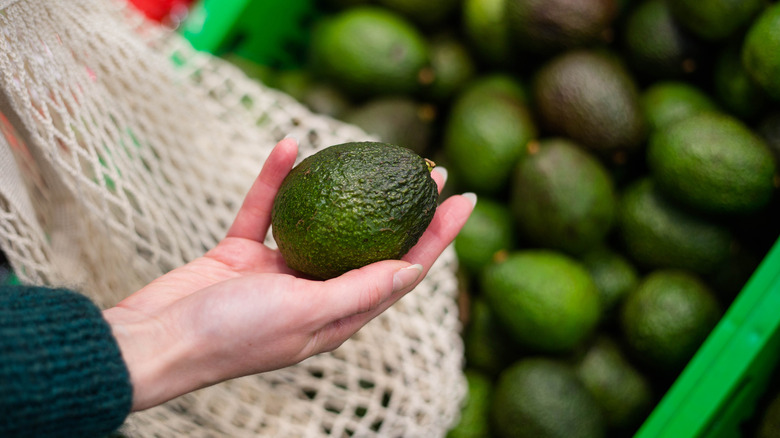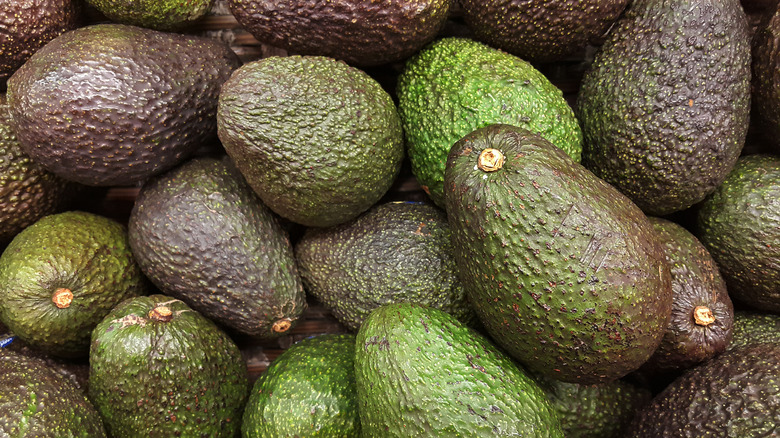Why You Shouldn't Rely On Color When Picking Out Avocados
It can be a challenge to find the perfectly ripe avocado. The creamy, green fruit is notorious for having a narrow window of perfect ripeness. It seems like avocados are either impossible to keep fresh, or go bad the moment you turn your back. It's a controversy that has even earned the avocado the ultimate mark of notoriety — meme status.
According to the California Avocado Commission, the best means of judging an avocado's ripeness is to hold it in the palm of your hand, and give it a gentle squeeze. An avocado that's ready to eat should have some give, without feeling soft or squishy; those are signs the avocado may have turned.
For many fruits and vegetables, color is another great indicator of ripeness. However, when picking avocados, color might be a misleading sign. For example, while the classic Hass avocado is known to reach a dark green or even black color as it ripens, other varieties — like the Pinkerton, Fuerte, and Reed — will retain different shades of green (and in the case of Zutano, a yellow-green), even as they reach peak ripeness (per The Los Angeles Times).
Different varieties mean different colors of ripeness
There are more than 50 avocado varieties in existence with colorful names like Pinkerton, Bogdon, Bacon, and Gwen (via Fine Dining Lovers). Not all of these varieties are going to turn dark as they ripen, as the California Avocado Commission explains.
The two most common varieties found around the world are the Fuerte and the Hass. The skin of a Hass avocado will often turn dark green when it's ripened, but Fuertes are known to keep their lighter color. So, while color can be an indicator of freshness, it's best to check which variety you're looking at before overlooking a display of Fuertes because none of them "looked ripe."
The Hass avocado is actually a relatively new variety of avocado that is only about 100 years old. That may sound ancient to some, but it's nothing compared to other varieties of avocado that trace back thousands of years in Central and South America, with the first domesticated avocado tree believed to have been planted about 5,000 years ago (via Avocados from Mexico).
The Hass avocado (which accounts for 90% of all avocados grown in California) rose to prominence in the United States during the early half of the 20th century, thanks to its durability and nutritional benefits.

